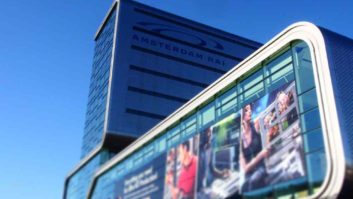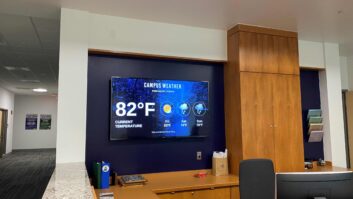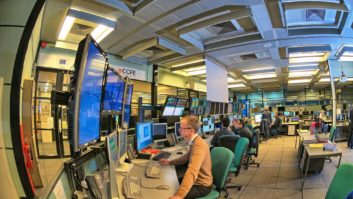The matrix upgraded. A maritime environmental consultancy has updated its audio infrastructure following the addition of a new ship simulator. David Davies reports on a system that leaves room for further expansion.
Globally renowned civil engineering and environmental hydraulics consultancy and research company HR Wallingford conducts extensive research into the management of water. Its designated Maritime Department handles design projects within the maritime environment.
The recent addition of a third real-time ship simulator to its HQ near Oxford prompted a rethink of the facility’s audio networking requirements, and as a result this is now based entirely upon Peavey’s MediaMatrix system. Originally introduced in 1993, MediaMatrix now encompasses more than 16 products – from a small rackmountable processor to a large enterprise system employing CobraNet technology for audio routing and distribution.
MediaMatrix continues to be a fundamental part of Peavey’s pro-audio presence in 2009, and the latest innovation – the nControl hardware and software package – joined the range in June. Prior to the arrival of the third simulator, HR Wallingford’s Maritime Department operated a point-to-point link with fairly straightforward audio connections.
The introduction of a third simulator – a tug – meant that all three needed to be cross-linked. With configuration requirements subject to constant change – for example, one simulator may be deployed as a standalone at the same time as another is being used by a different client – it became clear that the existing analogue matrix was no longer fit for purpose.
Recognising that an expanding digital solution was “the only sensible way to go forward” bearing in mind the existing Cat5e cabling infrastructure and the possibility of a fourth simulator being added in the future, HR Wallingford IT expert Ian Payne moved quickly to specify the Peavey system.
Futureproof system
“MediaMatrix was a strong competitor in the mid-price systems, with plenty of advanced features for potential future use,” he tells IE. “We were also on a very tight time schedule for the tug installation and Peavey was able to deliver in time. The system has worked fine and, with a little telephone support, we were able to program it ourselves in just a few days. This was very important as we had major overseas clients coming in as soon as the tug simulator was ready.”
The MediaMatrix set-up now at the disposal of the Maritime Department comprises a Nion nX32 programmable DSP network hub and two CAB 4n 8-in/8-out break-out boxes.
The system takes a series of audio inputs – examples include instructor feedback, computer-generated ambient sounds, simulated radio channels and trainee-to-instructor feeds – and routes them according to the training scenario in question via CobraNet technology. A
selected subset of the sounds is also fed to speakers in nearby observation rooms with
displays that show the other participants what is happening without disturbing those
directly involved in the simulation exercise.
“We have a number of stem and boundary microphones feeding the system – the switchable phantom power has been very useful in this regard as we have been able to remove preamps that were only there to supply power – and the background sounds are fed from PCs straight into the MediaMatrix,” notes Payne.
“The program is effectively a scene-driven 24×24 matrix, with radio ‘effects’ and limiters on all outputs. These have been very welcome to ensure that nobody accidentally overloads any eardrums.”
Quality and flexibility
Payne reports a “significant increase” in sound quality and highlights the boost to the Maritime Department’s working practices afforded by its ease of configurations.
“We can use the ship simulators separately or in different configurations together, such as one ship with two independently controlled tugs, pretty much at the touch of a button,” he says. The system’s scalability is also likely to be an asset, with the possibility of a fourth simulator being added. “We anticipate that a fourth tug can go in without any major alterations as we have a few spare inputs and outputs. Any further upgrades will be straightforward as we will just have to add CAB4N units. Compatibility was a major consideration, so having a CobraNet system gives us the chance of using other vendors’ hardware in the future.”
This successful installation indicates that, some 16 years after its debut, the MediaMatrix system continues to be applied to intriguing new projects. For HR Wallingford, MediaMatrix both enables a complex current set-up – which also includes Audio-Technica ATM73A headset microphones, Behringer MS audio monitors and beyerdynamic MPC66VC boundary mics – and allows for the possibility of hassle-free expansion in the future.
As Payne readily concludes: “The new system has totally changed the way we handle audio, simplifying and enhancing the system and leaving us completely relaxedabout future requirements







